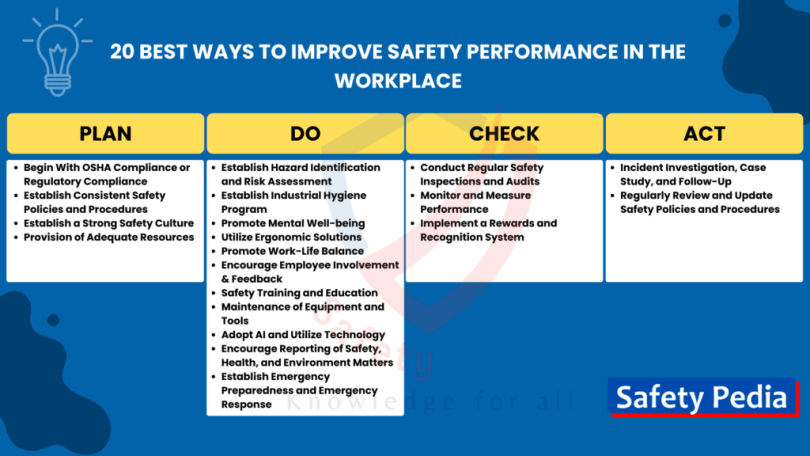Workplace safety is more than just following rules and wearing protective gear. It also depends on the health and well-being of every employee.
Regular health checks play a vital role in ensuring that workers are physically fit and mentally alert to perform their tasks safely. These checks are not only about preventing injuries, but also about promoting a culture where health and safety go hand in hand.
Why Health Checks Matter
Health checks are routine assessments that evaluate an employee’s overall physical and mental health. They can identify potential risks early, allowing for timely intervention before small issues become serious problems.
For example, regular checks may detect vision or hearing problems that could affect performance in safety-critical roles. They can also uncover conditions such as high blood pressure or diabetes, which may not have obvious symptoms but could lead to health emergencies if left untreated.
By addressing these issues early, both employees and employers can take proactive steps to improve health and safety outcomes.
The Link Between Health and Workplace Safety
Healthy employees are better equipped to handle the demands of their jobs. They are more alert, have better concentration, and are less likely to make mistakes. On the other hand, poor health can increase the risk of accidents and errors, particularly in high-risk industries like construction, transport, or manufacturing.
Even in office settings, health problems such as fatigue, stress, or chronic pain can reduce focus and increase the likelihood of mistakes. By supporting employee health and corporate wellness programs, organisations reduce risks and create safer work environments.
What Health Checks Typically Include
The content of a workplace health check can vary depending on the type of job and the industry. However, most checks include a combination of:
- Medical history review: Looking at past and current health conditions to assess potential risks.
- Physical examinations: Measuring weight, blood pressure, heart rate, and other vital signs.
- Vision and hearing tests: Ensuring employees can safely perform tasks that rely on these senses.
- Fitness assessments: Evaluating physical strength and endurance for physically demanding roles.
- Mental health screening: Identifying signs of stress, anxiety, or other conditions that may impact well-being and performance.
Some employers also include drug and alcohol testing to ensure safety-sensitive roles are performed without risk.
Benefits for Employees
For employees, regular health checks provide peace of mind. They offer a chance to detect health issues early, access advice on managing conditions, and get referrals for further care if needed. These checks can also highlight positive changes employees can make to improve their health, such as adopting better nutrition, exercise, or stress management habits.
Knowing that your employer cares about your health can also boost morale and job satisfaction. It creates a workplace where people feel valued and supported.
Benefits for Employers
Employers also gain many advantages from investing in health checks. Healthy workers are less likely to take sick leave, reducing absenteeism. They are also more engaged, productive, and committed to their jobs.
Health checks can also reduce workplace accidents, which means fewer compensation claims, less downtime, and a better safety record. Furthermore, these checks support compliance with workplace health and safety regulations, helping businesses avoid legal issues.
Supporting Mental Health Through Health Checks
Mental health is just as important as physical health when it comes to workplace safety. Stress, anxiety, and burnout can affect concentration and decision-making, increasing the risk of mistakes.
Many corporate wellness programs now include mental health assessments as part of regular checks. These screenings can identify early signs of mental strain and provide access to support services such as counselling or employee assistance programs. Creating an open culture where mental health is supported benefits everyone.
How Corporate Wellness Programs Enhance Safety
Corporate wellness programs are designed to improve overall employee health through education, support, and preventive measures. They may include fitness initiatives, nutrition advice, stress management workshops, and regular health screenings.
By combining these elements, wellness programs create an environment where employees can take control of their health. When health becomes a priority, workplace safety naturally improves. Employees are more focused, injuries are reduced, and the organisation builds a stronger safety culture.
Taking Action for a Safer Workplace
Improving guest posting sites with backlinks workplace safety starts with recognising the link between health and performance. Employers can take steps by scheduling regular health checks, encouraging participation in wellness programs, and fostering open communication about health issues. Employees, on the other hand, should take advantage of these opportunities and follow through on any recommendations provided during checks.
Together, these efforts create a safer and healthier workplace where everyone benefits.
When health is prioritised, safety follows. Regular checks, combined with a strong commitment to wellness, ensure that both employees and employers can move forward with confidence and focus.







